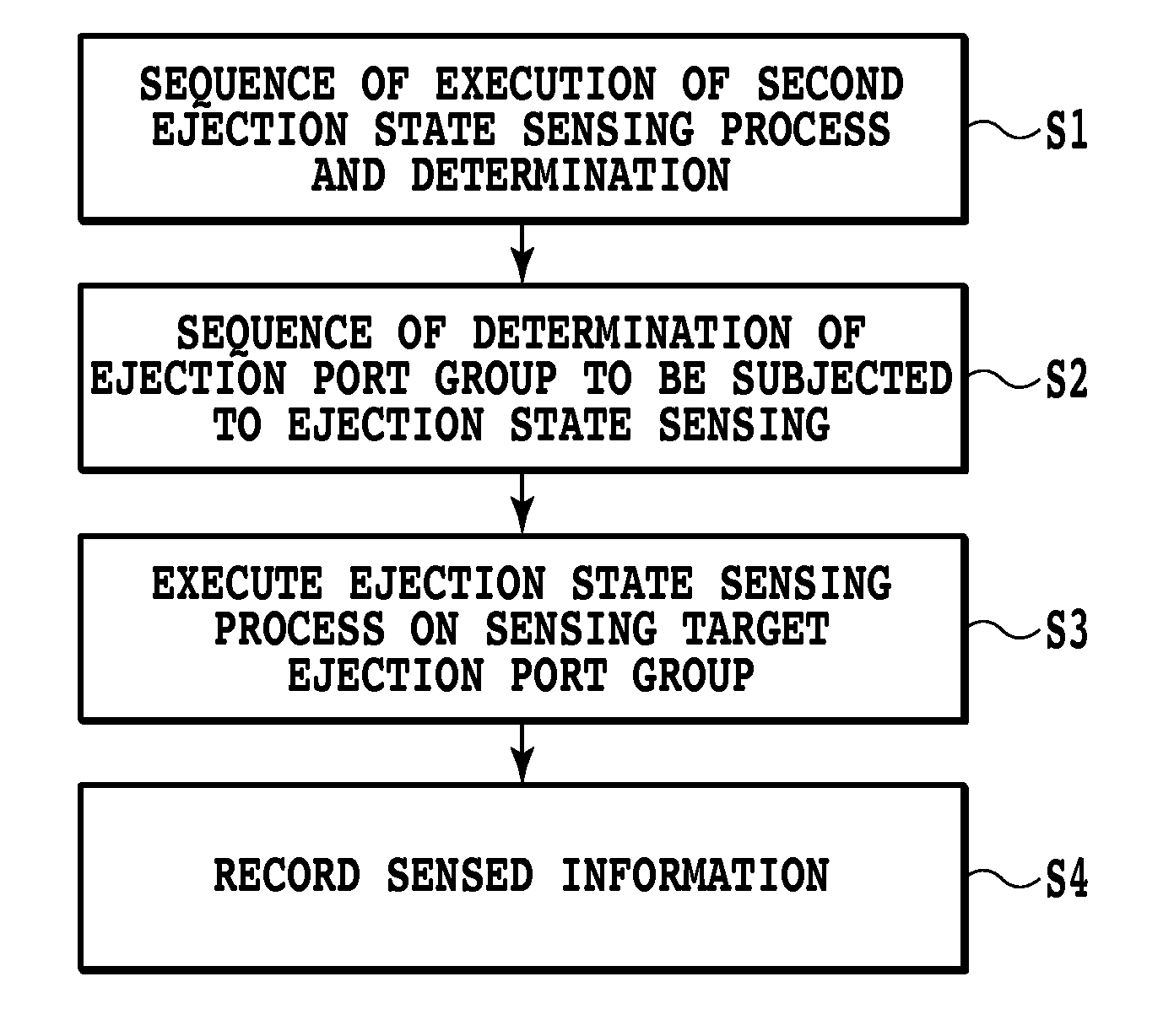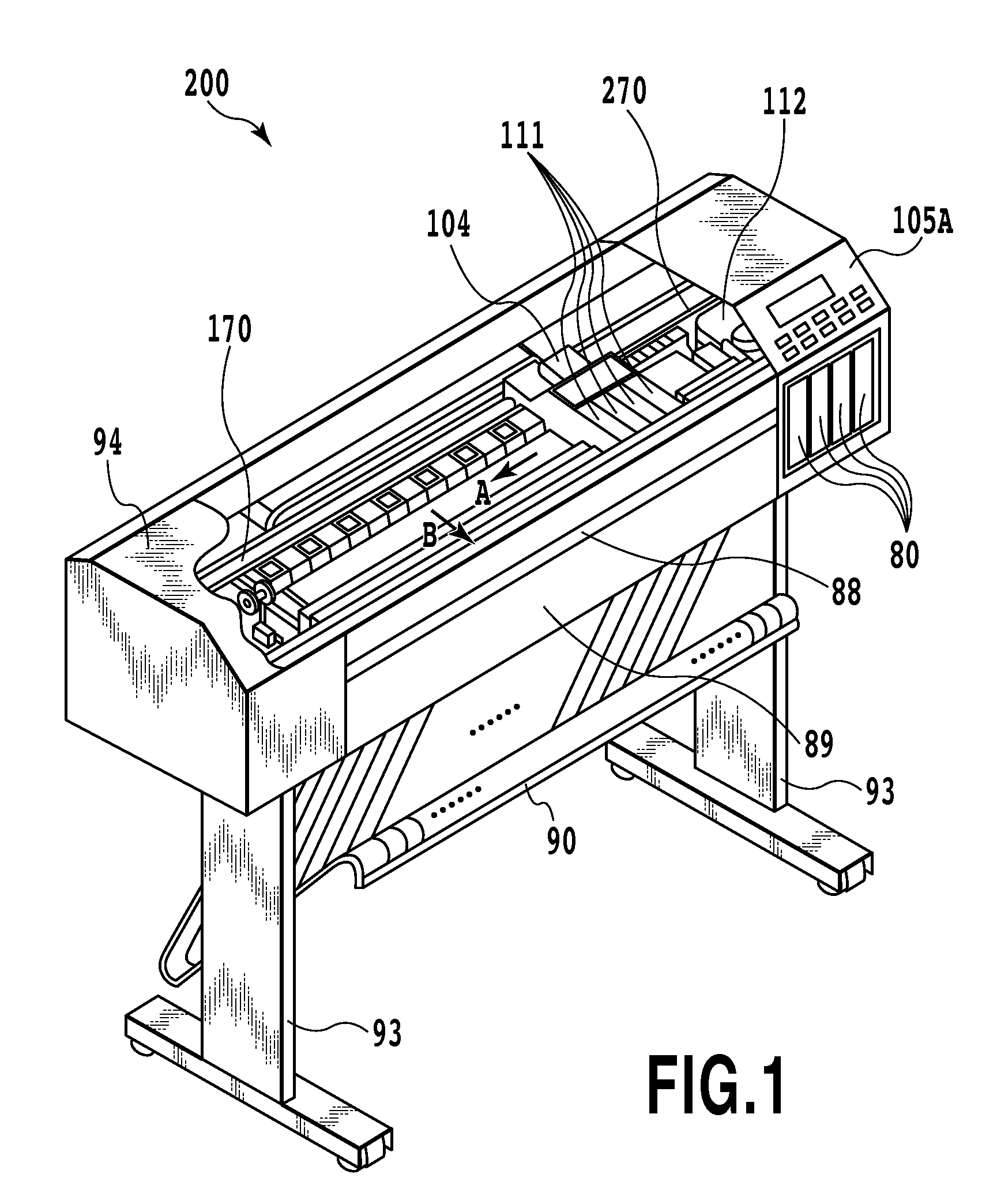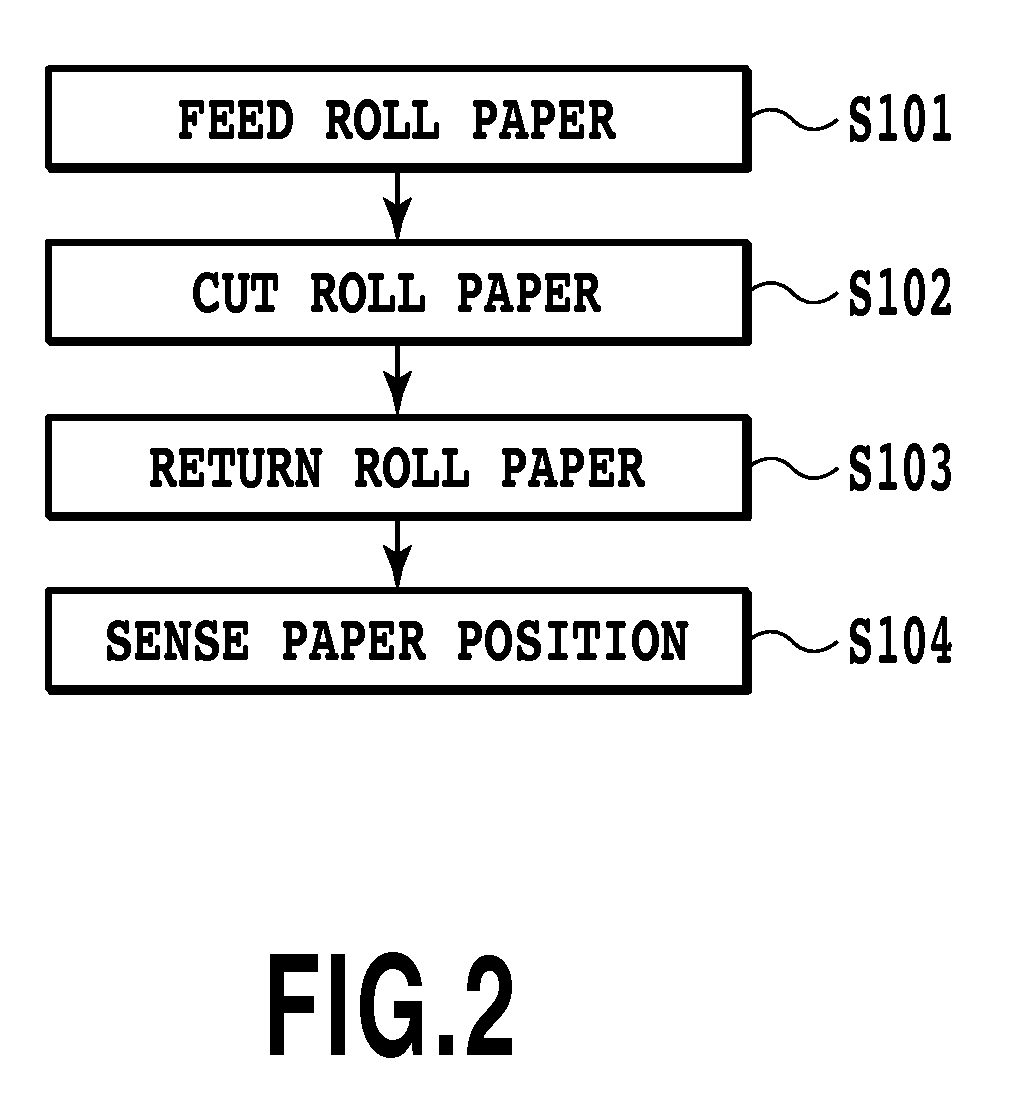Printing apparatus and printing method
a printing apparatus and printing method technology, applied in the direction of printing, other printing apparatus, etc., can solve the problems of inability to print images with white or black stripes, etc., to prevent degradation of print image quality, improve reliability, and suppress the effect of throughpu
- Summary
- Abstract
- Description
- Claims
- Application Information
AI Technical Summary
Benefits of technology
Problems solved by technology
Method used
Image
Examples
Embodiment Construction
[0031]An embodiment for carrying out the present invention will be described below with reference to the attached drawings.
[0032]An ink jet printing apparatus according to the embodiment of the present invention will be described. Here, an ink jet printing apparatus 200 configured to print roll paper will be described.
[0033]FIG. 1 is a perspective view of an ink jet printing apparatus 200 (hereinafter also simply referred to as a printing apparatus) which is partly exploded so as to show the internal structure. FIG. 1 shows the ink jet printing apparatus 200 with an upper cover removed therefrom.
[0034]As shown in FIG. 1, a manual insertion port 88 is formed in the front surface of the printing apparatus 200. A roll paper cassette 89 that can be opened forward is provided under the manual insertion port 88 in FIG. 1. Cut paper with a fixed length can be inserted through the manual insertion port 88. Print media such as print paper are fed into the printing apparatus through the manua...
PUM
 Login to View More
Login to View More Abstract
Description
Claims
Application Information
 Login to View More
Login to View More - R&D
- Intellectual Property
- Life Sciences
- Materials
- Tech Scout
- Unparalleled Data Quality
- Higher Quality Content
- 60% Fewer Hallucinations
Browse by: Latest US Patents, China's latest patents, Technical Efficacy Thesaurus, Application Domain, Technology Topic, Popular Technical Reports.
© 2025 PatSnap. All rights reserved.Legal|Privacy policy|Modern Slavery Act Transparency Statement|Sitemap|About US| Contact US: help@patsnap.com



